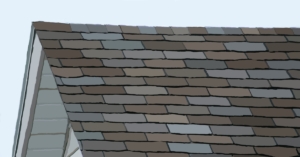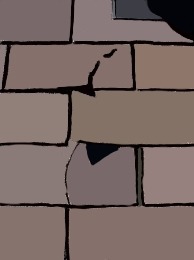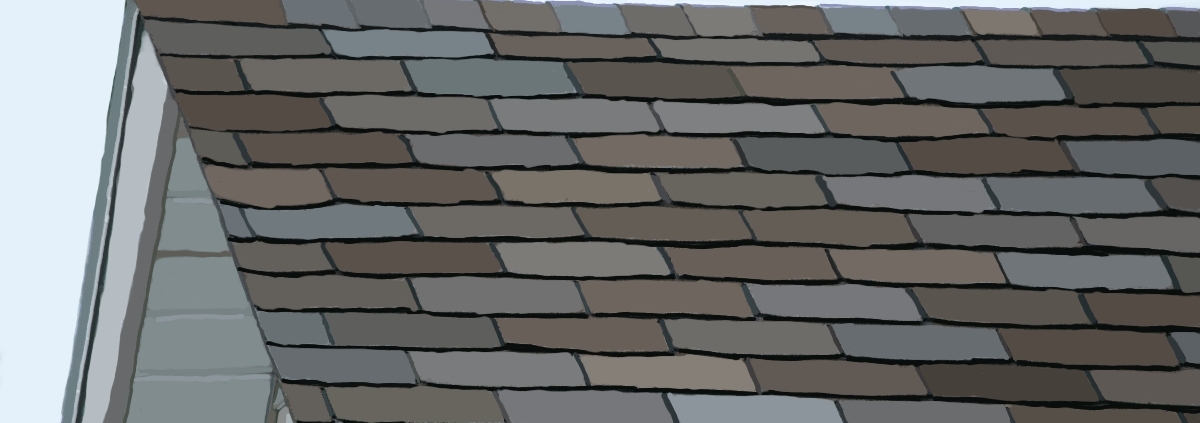Asphalt Shingles
Asphalt shingles are the most commonly used roofing material in the U.S. Its estimated that three quarters of roofs are protected by these shingles. This is in large part due to their durability and resistance to temperature and other external conditions like winds, fire, etc. Furthermore, asphalt shingles are relatively budget friendly and offer a simple yet versatile installation process.
Asphalt shingles are available many varieties, each of which having their unique advantages and disadvantages. They are generally comprised of a base material which gives the shingles strength and shape, an asphalt layer which provides a water resistant barrier, and a granular surface that reflects UV radiation and provides added durability, texture, and color.

Organic and Fiberglass Based Singles
Organic asphalt shingles consist of a base made from organic materials such as cellulose, wood, cardboard, or paper. These types of shingles are then coated over with a layer of asphalt. Organic shingles are typically heavier and thicker resulting in greater tear resistance and durability. These are, however, more vulnerable to fires because of the organic matter base. Due to this disadvantage, the manufacture or organic shingles was brought to a halt around 2008, though many were installed during the years that followed.
Fiberglass shingles have a base layer of glass mat fibers attached to the urea-formaldehyde resin. The glass base material is then overlapped with asphalt making it more resistant to external factors. These base materials are safe and perform better in a fire or other like situations. Fiberglass shingles are lighter and thinner than organic shingles, making them the preferable choice for roofers. Fiberglass shingles are considered to perform better in windstorms, though, both types of shingles hold up well in most climates.
Architectural and 3-Tab Shingles
3-Tab shingles have a uniform pattern and shape that makes them easy to identify. They are made from a single layer of asphalt, which makes them a lighter and budget-friendly option compared to other roofing types. 3 Tab shingles have a typical lifespan ranging from 15-20 years.
Architectural shingles are often referred to as “dimensional” or “laminated” shingles. These are comprised of two layers of asphalt and fiberglass to provide a thick and durable surface. Architectural shingles are patterned in a manner that resembles original wood type shingles. Architectural shingles are more expensive compared to 3-tabs, but offer greater quality and strength due to their thickness. Architectural shingles have a typical lifespan ranging from 20-30 years.
Shingle Wear
Asphalt shingles deteriorate from exposure to UV radiation. As the shingles age, granules are removed by the elements which ultimately exposes the asphalt to harmful UV rays. Other factors that cause a roof to wear include leaves and debris, ice and snow, excessive heat, inadequate venting of the roof space underneath, low roof slope, multiple roofing layers and improper installation methods. When cracking, blistering, and or curling of the shingles become evident its necessary to hire a roofer to provide the required repairs or replacement of the roof covering.

Tips for Maintaining Asphalt Shingles
- Regular cleaning extends the lifespan of asphalt shingles and helps mitigate problems which could have easily been avoided.
- You should also regularly check the gutters to ensure storm water and ice melt are draining away from the roof and structure.
- Check for standing water on the roof. This condition can deteriorate the asphalt shingles and result in significant a roof leak.
- Make sure trees nearby are trimmed to prevent limbs from scraping the surface of your shingles or falling limbs from damaging the roof. Shade cast by trees can block the sunlight from evaporating water and melting snow. Prolonged exposure to moisture can result in accelerated wear of the shingles in these areas.
- Remove moss and algae growth early on. Left unchecked, these fungi can accelerate the aging of your roof and cause excess granule loss.
- Check what the warranty covers and choose the asphalt shingle that covers repair and replacement.
- Hire a pro to perform routine roof check-ups to help identify potential issues.



